Students with Perseverance receive messages from Mars
Friday, 18 February 2022 05:11 The first set of middle-schoolers in the agency's "You've Got Perseverance!" campaign was honored with a message from the Red Planet and a chat with the rover team at JPL.
A group of 20 young students who have shown the character trait that NASA's Perseverance rover is named for received messages of encouragement directly from that six-wheeled scientist on Mars.
Nominated by educator
The first set of middle-schoolers in the agency's "You've Got Perseverance!" campaign was honored with a message from the Red Planet and a chat with the rover team at JPL.
A group of 20 young students who have shown the character trait that NASA's Perseverance rover is named for received messages of encouragement directly from that six-wheeled scientist on Mars.
Nominated by educator Can a planet have a mind of its own?
Friday, 18 February 2022 05:11 The collective activity of life-all of the microbes, plants, and animals-have changed planet Earth.
Take, for example, plants: plants 'invented' a way of undergoing photosynthesis to enhance their own survival, but in so doing, released oxygen that changed the entire function of our planet. This is just one example of individual lifeforms performing their own tasks, but collectively having
The collective activity of life-all of the microbes, plants, and animals-have changed planet Earth.
Take, for example, plants: plants 'invented' a way of undergoing photosynthesis to enhance their own survival, but in so doing, released oxygen that changed the entire function of our planet. This is just one example of individual lifeforms performing their own tasks, but collectively having Latecoere strengthens its space activities through three cooperations with Airbus
Friday, 18 February 2022 05:11 Latecoere, a leading partner of major international aircraft manufacturers and the European leader in satellite wiring, is strengthening its activity in the space industry thanks to three major cooperation projects with Airbus.
Latecoere designs, industrializes, produces and integrates electrical harnesses for three emblematic European space programs: the Eurostar Neo satellites, for both
Latecoere, a leading partner of major international aircraft manufacturers and the European leader in satellite wiring, is strengthening its activity in the space industry thanks to three major cooperation projects with Airbus.
Latecoere designs, industrializes, produces and integrates electrical harnesses for three emblematic European space programs: the Eurostar Neo satellites, for both NASA challenges students to discover what powers them
Friday, 18 February 2022 05:11 NASA is inviting students to participate in an essay contest to explore how it powers some of its most famous missions. The contest also encourages participants to learn something about themselves in the process. The Power to Explore Challenge, open to K-12 students in U.S. public, private, and homeschools, is accepting entries from Tuesday, Feb. 15 through Wednesday, April 13.
The competi
NASA is inviting students to participate in an essay contest to explore how it powers some of its most famous missions. The contest also encourages participants to learn something about themselves in the process. The Power to Explore Challenge, open to K-12 students in U.S. public, private, and homeschools, is accepting entries from Tuesday, Feb. 15 through Wednesday, April 13.
The competi Terran Orbital touts military and defense contracts ahead of going public
Thursday, 17 February 2022 23:27
Terran Orbital executives told investors the company is heavily weighted toward government work and expects significant revenues from defense and intelligence contracts
The post Terran Orbital touts military and defense contracts ahead of going public appeared first on SpaceNews.
Florida’s Space Coast is busier than ever, but there’s room for more
Thursday, 17 February 2022 22:00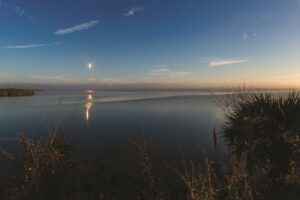
Long the busiest space launch complex in the United States, Cape Canaveral and Kennedy extended their combined five-year streak as the busiest commercial, civil and military launch range in the world.
The post Florida’s Space Coast is busier than ever, but there’s room for more appeared first on SpaceNews.
Eutelsat pushes back return-to-growth forecast amid satellite delays
Thursday, 17 February 2022 21:15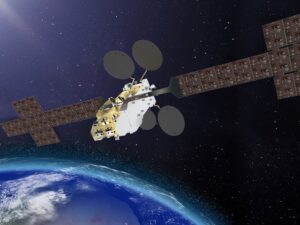
Eutelsat said Feb. 17 it expects a revenue slump to stretch into 2023 as it awaits the launch of two delayed satellites critical to a turnaround.
The post Eutelsat pushes back return-to-growth forecast amid satellite delays appeared first on SpaceNews.
Copernic unveils platform with sale of lunar payload
Thursday, 17 February 2022 19:23
Copernic Space, a Los Angeles startup, unveiled its blockchain-powered platform for selling space assets.
The post Copernic unveils platform with sale of lunar payload appeared first on SpaceNews.
Copernic Space unveils platform with sale of lunar payload
Thursday, 17 February 2022 19:23
Copernic Space, a Los Angeles startup, unveiled its blockchain-powered platform for selling space assets.
The post Copernic Space unveils platform with sale of lunar payload appeared first on SpaceNews.
State Fight: A coast-to-coast battle to bring home the space jobs
Thursday, 17 February 2022 18:46
With California losing its luster as the aerospace industry’s golden state, a coast-to-coast competition for space companies is heating up.
The post State Fight: A coast-to-coast battle to bring home the space jobs appeared first on SpaceNews.
State Fight: Virginia is for rockets
Thursday, 17 February 2022 18:44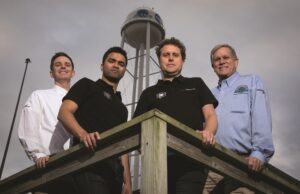
This could be a pivotal year for the Virginia Space.
The post State Fight: Virginia is for rockets appeared first on SpaceNews.
Starship lookalike among China’s new human spaceflight concepts
Thursday, 17 February 2022 18:40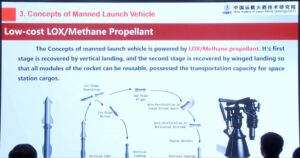
China is researching and developing new vehicles for various human spaceflight missions, including a new methane-fueled launcher apparently inspired by SpaceX.
Space acquisition nominee: Satellites must be defended, ‘the economy depends on space’
Thursday, 17 February 2022 18:36
Frank Calvelli, nominated by President Biden to be assistant secretary of the Air Force for space acquisition and integration, said Feb. 17 that the United States needs to move quickly to protect satellites so they can be “counted on during times of crisis and conflict.
Wanted: your new ideas for navigation
Thursday, 17 February 2022 13:52
It is hard to overstate the importance of knowing precisely where (and when) you are and where you are going within today’s economy and society. Do you have a promising idea to improve the current positioning state-of-the-art? Then ESA’s navigation-focused NAVISP research programme wants to hear from you, before the end of March.
SpaceLink hires Axiom to support ISS communications demonstration
Thursday, 17 February 2022 13:00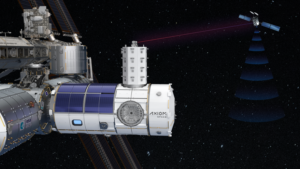
SpaceLink announced plans Feb. 17 to work with Axiom Space to conduct the first demonstration of its space data relay service on the International Space Station.
The post SpaceLink hires Axiom to support ISS communications demonstration appeared first on SpaceNews.

